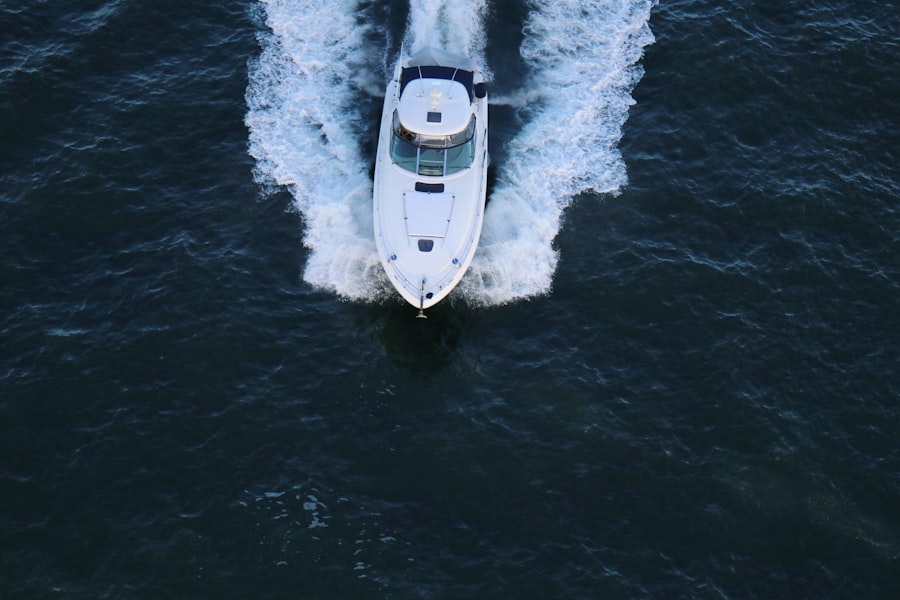Embarking on the journey of yacht ownership begins with a thorough understanding of your specific yachting needs. This initial step is crucial, as it lays the foundation for all subsequent decisions. Consider the primary purpose of your yacht.
Are you looking for a vessel primarily for leisure, such as family vacations and weekend getaways? Or do you envision using it for more adventurous pursuits, like long-distance cruising or even competitive sailing? Each of these purposes will significantly influence the type of yacht that best suits your requirements.
Additionally, think about the number of people you plan to accommodate on board. A yacht intended for intimate family outings will differ vastly from one designed to host larger gatherings or parties. The layout, size, and amenities of the yacht should align with your lifestyle and the experiences you wish to create.
Furthermore, consider your level of experience with boating. If you are a novice, a more user-friendly vessel with simpler handling characteristics may be advisable. Conversely, seasoned sailors might prefer a more complex yacht that offers advanced features and performance capabilities.
Key Takeaways
- Clearly define your yachting needs before starting the buying process.
- Establish a realistic budget that includes purchase and ongoing costs.
- Research different yacht types and reputable brands to find the best fit.
- Collaborate with a trusted yacht broker to navigate the market effectively.
- Conduct thorough in-person inspections and negotiate carefully before finalizing the purchase.
Setting a Realistic Budget
Once you have a clear understanding of your yachting needs, the next step is to establish a realistic budget. This process involves more than just determining how much you can afford to spend on the initial purchase; it requires a comprehensive evaluation of all associated costs. The price of a yacht can vary dramatically based on its size, brand, age, and condition.
Therefore, it is essential to conduct thorough research to understand the market and set a budget that reflects both your financial capacity and your desired specifications. In addition to the purchase price, prospective yacht owners must account for ongoing expenses such as maintenance, insurance, docking fees, fuel costs, and potential crew salaries if applicable. Maintenance can be particularly variable; older yachts may require more frequent repairs and upkeep than newer models.
Insurance costs can also fluctuate based on factors like the yacht’s value, intended use, and cruising area. By factoring in these ongoing expenses from the outset, you can avoid financial strain down the line and ensure that your yachting experience remains enjoyable.
Researching Yacht Types and Brands

With a budget in place, it’s time to delve into the world of yacht types and brands. The diversity in yacht design is vast, encompassing everything from sleek motor yachts to elegant sailing vessels. Each type has its own unique characteristics and advantages.
For instance, motor yachts are often favored for their speed and ease of use, making them ideal for quick trips or entertaining guests. In contrast, sailing yachts offer a more traditional experience and can be more economical in terms of fuel consumption, appealing to those who appreciate the art of sailing. When researching brands, it’s essential to consider their reputation for quality and reliability.
Renowned manufacturers like Sunseeker, Azimut, and Beneteau have established themselves as leaders in the industry due to their commitment to craftsmanship and innovation. Reading reviews from current owners and consulting online forums can provide valuable insights into the performance and durability of specific models. Additionally, attending boat shows or visiting marinas can offer firsthand experience with various yachts, allowing you to assess their design and functionality in person.
Working with a Reputable Yacht Broker
| Metric | Description | Typical Value | Importance |
|---|---|---|---|
| Broker Experience | Number of years the broker has been in the yacht brokerage business | 5-20 years | High |
| Client Satisfaction Rate | Percentage of clients who report positive experiences | 85-95% | High |
| Number of Listings | Active yachts currently listed for sale | 10-50 yachts | Medium |
| Average Sale Time | Average duration from listing to sale completion | 3-6 months | Medium |
| Commission Rate | Percentage of sale price earned by the broker | 5-10% | Medium |
| Market Knowledge | Broker’s understanding of current yacht market trends | Expert | High |
| Legal Compliance | Broker’s adherence to maritime and sales regulations | 100% | High |
| Post-Sale Support | Availability of assistance after the sale is completed | Yes | Medium |
Navigating the complexities of yacht purchasing can be daunting, which is why enlisting the help of a reputable yacht broker is often a wise decision. A knowledgeable broker brings invaluable expertise to the table, guiding you through every step of the process from initial search to final purchase. They possess an extensive network within the industry, which can provide access to listings that may not be publicly available.
Moreover, brokers can help you refine your search based on your specific needs and preferences. When selecting a broker, it’s crucial to choose someone with a solid track record and positive client testimonials. Look for brokers who specialize in the type of yacht you are interested in and who have experience in negotiating deals that align with your budget.
A good broker will not only assist in finding suitable options but will also provide insights into market trends and help you understand the nuances of yacht ownership. Their expertise can be particularly beneficial when it comes to navigating legalities and paperwork associated with yacht transactions.
Inspecting Yachts in Person
After narrowing down your options with the help of your broker, the next critical step is inspecting potential yachts in person. This phase is essential for assessing the condition of the vessel and ensuring it meets your expectations. During an inspection, pay close attention to both the exterior and interior aspects of the yacht.
Look for signs of wear and tear, such as rust on metal components or water damage in living areas. A thorough examination will help you identify any potential issues that may require immediate attention or could lead to costly repairs in the future. It’s also advisable to take the yacht out for a sea trial if possible.
This experience allows you to evaluate its performance under real conditions—how it handles in various sea states, its speed capabilities, and overall comfort while underway. During this trial, assess how well the yacht meets your needs in terms of maneuverability and ease of operation. Engaging with current owners or crew members during this process can provide additional insights into the yacht’s performance and maintenance history.
Negotiating the Purchase Price

Once you have identified a yacht that meets your criteria, the next step is negotiating the purchase price. This stage can be one of the most challenging aspects of buying a yacht but is also where significant savings can be achieved with effective negotiation strategies. Start by conducting thorough research on comparable yachts in the market to establish a fair price range for your desired model.
Understanding market conditions—whether it’s a buyer’s or seller’s market—can also influence your negotiation approach. When entering negotiations, be prepared to articulate why you believe a lower price is justified based on your research findings or any issues identified during inspections. It’s essential to remain calm and composed throughout this process; emotional decisions can lead to overspending or hasty agreements that may not serve your best interests.
A skilled broker can play a pivotal role here by leveraging their experience to negotiate on your behalf while ensuring that both parties feel satisfied with the final agreement.
Understanding Ownership Costs
As you move closer to finalizing your purchase, it’s vital to have a comprehensive understanding of ownership costs beyond just the initial investment. Owning a yacht entails various ongoing expenses that can accumulate quickly if not properly managed. Maintenance is one of the most significant costs; regular upkeep is necessary to ensure safety and longevity.
This includes routine tasks such as cleaning, engine servicing, hull inspections, and addressing any wear-and-tear issues that arise over time. Insurance is another critical aspect of ownership costs that should not be overlooked. The premium will depend on factors such as the yacht’s value, age, intended use, and cruising area.
Additionally, consider docking fees at marinas or storage costs if you plan to keep your yacht out of water during certain seasons. Fuel expenses can also vary widely based on how often you plan to use your yacht and its fuel efficiency. By budgeting for these ongoing costs from the outset, you can enjoy your yachting experience without unexpected financial burdens.
Finalizing the Purchase and Taking Delivery
The final steps in purchasing a yacht involve completing all necessary paperwork and taking delivery of your new vessel. This process typically includes signing contracts that outline all terms agreed upon during negotiations, including payment schedules and contingencies related to inspections or financing arrangements. It’s crucial to review all documents carefully—consider having a maritime attorney assist with this process to ensure that everything is in order and that your interests are protected.
Once all paperwork is finalized and payment has been made, you will arrange for delivery of your yacht. This may involve transferring ownership documentation and registering the vessel with relevant maritime authorities if required. Upon taking delivery, conduct one last inspection to ensure everything is in working order before setting sail for the first time.
Familiarize yourself with all onboard systems and equipment; this knowledge will enhance your confidence as you embark on new adventures at sea.


